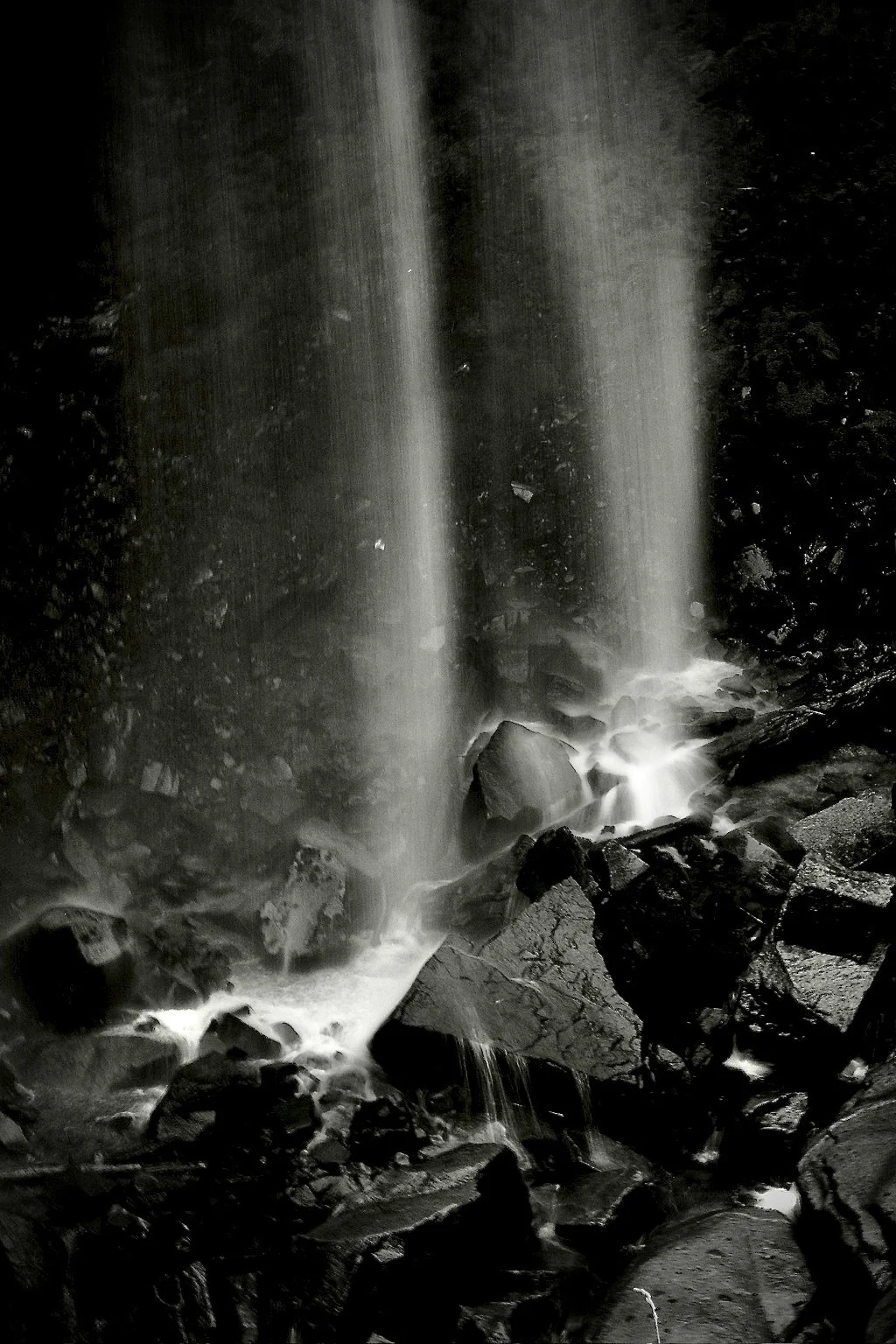Beauty in Tragedy
Who doesn’t find a waterfall beautiful? Yet, waterfall photographs are often cliché, taken with long exposure to smooth out the power to add grace to moving water. I still love them because they look ethereal, yet they are also a photographic challenge to visualize something in the character of this waterfall that others might miss.
This is Narada Falls, a waterfall in Mount Rainier National Park. It’s a double waterfall, whose first cascade falls twenty feet and passes under the road to Paradise. The second starts on the other side of the road and plunges 168 feet to the point photographed in this image. The fall of water is long enough to pull apart the the stream’s flow so its middle is cloud and mist rather than a pillar of falling drops.
I took this photo September 11, 2024. The significance of the date was not lost on me. Nor was my location in the middle of one of America’s great national parks and my good fortune to be a witness God’s magnificence handiwork. Despite the park’s beauty, it was also not lost on me it was built by volcanic fury and cataclysmic destruction.
And I remembered as I took this photograph what I saw on television that morning in 2001.
There was a moment when the news camera was in the atrium of the first tower, filming firefighters assembling to make the long climb to fight the fire ninety floors above. Then a bang and everyone stops for moment. Then another. I and the firefighters realized, and tens of thousands of people watching collectively, it was falling debris and probably bodies crashing onto the roof. Shortly afterwards we witnessed aerial photographs and photographs taken with long lenses of people waving for help cloth or their arms as they stood beside open windows, with smoke pouring out of the offices behind them.
The most famous photograph of that day was Richard Drew’s “The Falling Man”, a photograph that angered people then who thought it exploitive or just too painful to view even though it documents the horror and aftermath of people in burning offices, crying for help and gasping fresh air. People do not want to see a photo of a man’s death.
The Falling Man — Richard Drew
This is a great photograph. Maybe it’s even beautiful as photographic Art. It appears to capture a graceful fall, despite our knowledge about what is about to happen. To me it almost resembles the grace and elegance of the Spirit of Ecstasy, also known as the Flying Lady, the Rolls Royce hood ornament. The actual sequence of photographs were much more chaotic, the man spinning wildly out of control. Drew said shortly after taking the photo he did not capture this man’s death, but rather his life. The man, and the 200 others, many solo, a few in groups, some holding hands, faced a hopeless dilemma. These people choose as their last act a human one, an act of will and choice to take action. They decided they would go to freedom and fill their lungs those last ten seconds with sweet, fresh air. I believe everyone of them loved Life, and Nature, Love, and Beauty.
In an essay about the Falling Man, Alexander Atkins writes, “…Richard Drew took a picture of a man falling through the sky —falling through time as well through space. The picture went around the world, and then disappeared, as if we willed it away. One of the most famous photographs in human history became an unmarked grave, and the man buried inside its frame —the Falling Man — became the Unknown Soldier in a war whose end we have not seen….”
Regardless how one feels today about how the “War on Terror” has been conducted this last quarter century, I’m reminded of a verse in Leonard Cohen’s Anthem:
Ah, the wars will be fought again
The holy dove, she will be caught again
Bought and sold, and bought again
The dove is never free
Ring the bells that still can ring
Forget your perfect offering
There is a crack, a crack in everything
That’s how the light gets in
I have been to the World Trade Center Memorial in New York City. I have seen the white roses volunteers place in the names of the victims on a birthday. I have seen the pools were the Twin Towers once stood, and images of the lights shining as ghostly sentinels of the former buildings. I believe it’s a beautiful tribute to those who died that day. My photograph of Narada Falls too is a tribute of sorts, two columns of water falling to earth, resembling two cracks of light.

